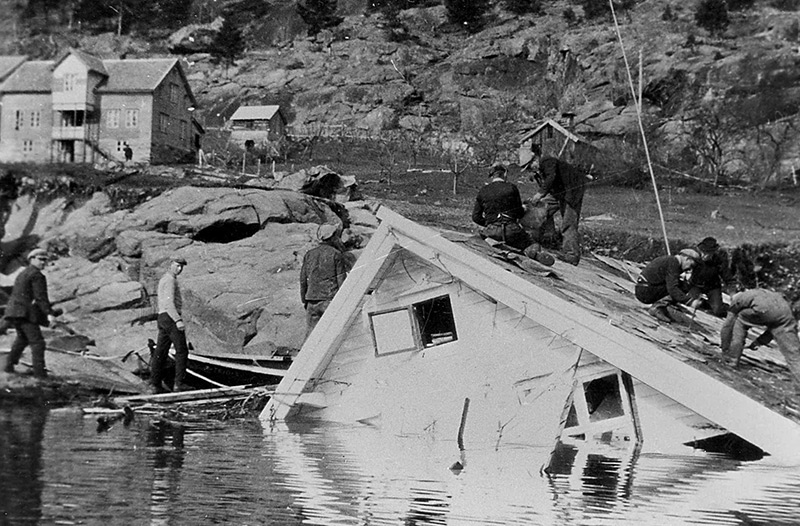
In 1934, part of a Norwegian mountain crashed into a fjord, causing a tidal wave that destroyed communities.
“It has happened before. It will happen again.”
That’s the infamous statement shown at the beginning of Bølgen, Norway’s 2015 disaster movie known in English as The Wave. The film depicted a tsunami caused by a mountain collapse that wiped out the tourist village of Geiranger.
The storyline was based on a real incident, along with a genuine future threat to fjord villages including Hellesylt and Geiranger.
Landslides in fjord Norway
Part of the reason for the movie’s power was that the storyline wasn’t just based on a threat. Such an incident happened before, not far away, in Tafjord.
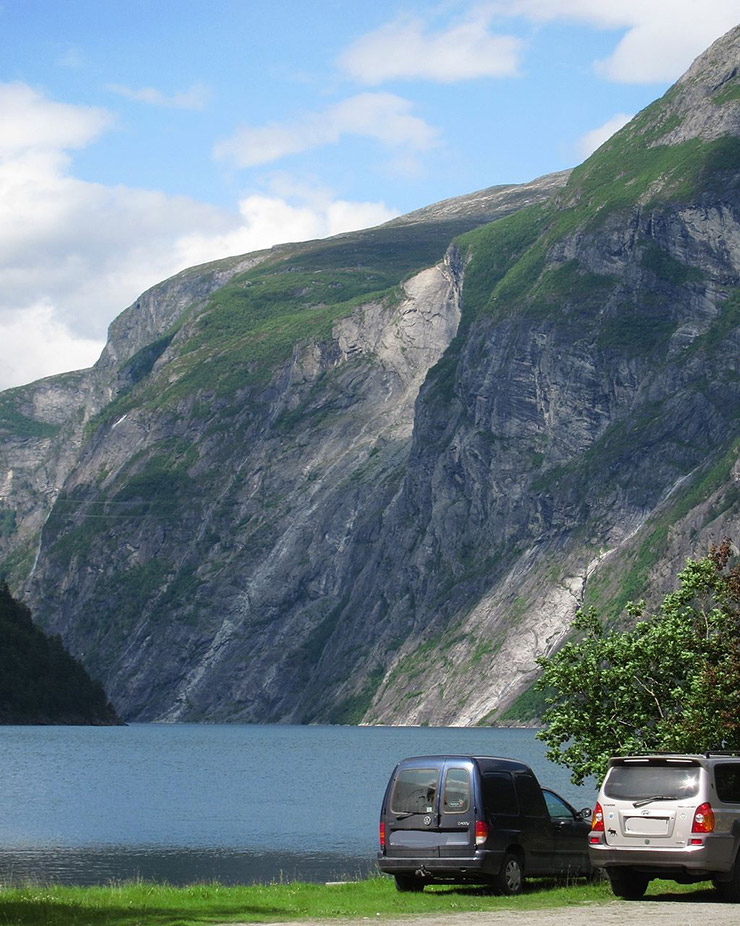
Earlier this summer part of the Heslemannen mountain collapsed after years of concern. Meanwhile, this summer’s huge number of landslides across the fjord region serve only to highlight the ongoing risk if such a collapse was to happen into a fjord.
Read more: Disasters in Norway
It seems the time is right to look at the risks, by looking at what happened in Tafjord.
Forty people died across three villages as a result of the waves in April 1934. They were caused by the Langhammaren mountain cliff collapsing into the narrow fjord below.
Today, an information board and memorial stone in Fjøra serve as a remainder of what happened. Memorial stones also stand at Tafjord, Sylte church and Dale church, with the names of those who died.
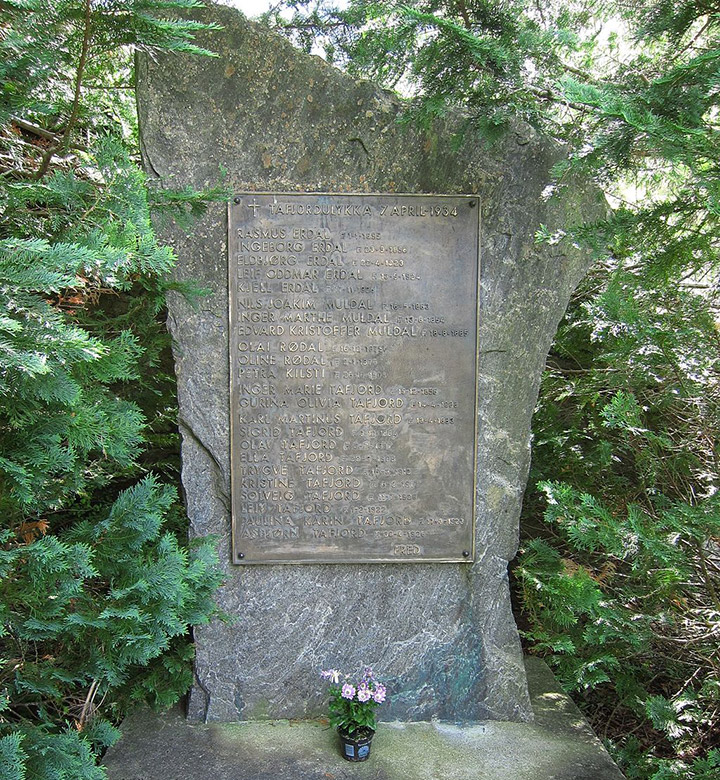
Locals knew of an expanding crack
Underwater scans reveal that rockslides have not been uncommon over the years. Locals were certainly aware of the risks, but not so much of the potential consequences.
There is evidence that Fjøra locals knew about the mountain crack in Langhammeren as long ago as 1870.
The crack grew to more than a metre across. Increasing numbers of rockslides caused those fishing in the fjord to give the area a wide berth.
However, few outside Fjøra knew of the risks, including no government officials or even those in the next villages, Valldal and Tafjord.
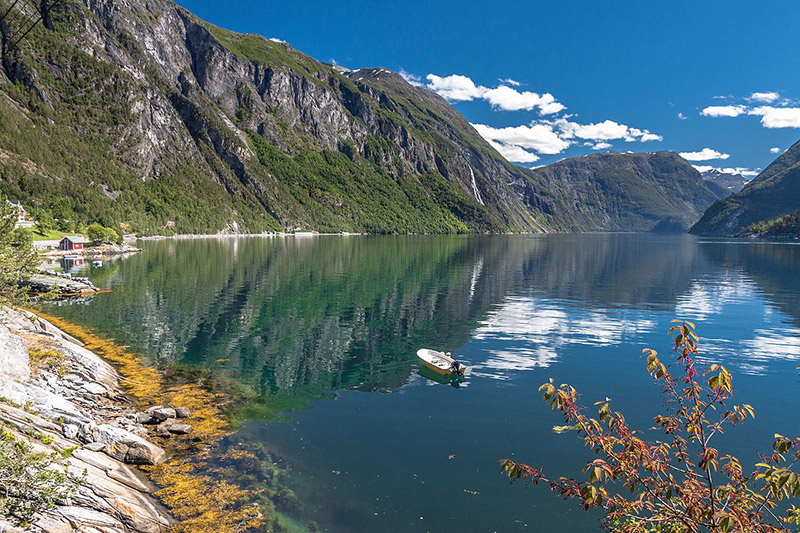
The night of the disaster
In the early hours of 7 February, 1934, the peace and quiet of fjord Norway was rocked. An explosive sound and earth tremors signalled what had happened: approximately three million cubic metres of rock tumbled down into the fjord from a height of more than 700 metres.
This created three tsunami waves, walls of water of up to 60 metres high that sped down the fjord. Just a couple of minutes after the rock fell, the waves reached the villages of Fjøra, Tafjord and Sylte.
Most people were asleep and did not know what had happened. Those that awoke could do little as the waves destroyed everything in their path.
23 died in Tafjord
When the waves struck Tafjord, they were still up to 17 metres high. One survivor who knew of the risk posed by the mountain crack had time to grab her young family and make for the highest point in the village. There she was joined by a neighbour and his young child.
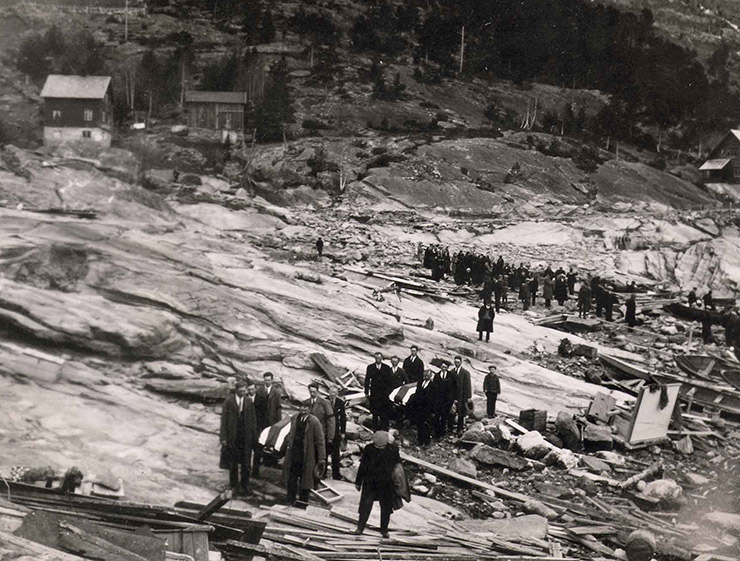
All six who made it up to the rock survived, but they all lost family members who weren’t so lucky. Hardest hit was one family, who lost the husband, wife, and eight of the twelve children to the water.
17 died in Fjøra
Father along the fjord, Fjøra was hit by waves of up to 14 metres in height. They completely destroyed six houses, along with countless cars, boats, power lines and livestock.
17 people lost their lives. It could have been more, but many raced to safety into the hills surrounding the village, with water lapping around their feet.
Waves of up to five metres high hit the municipal centre, Sylte. While the loss of material possessions here was big (six cars, houses, workshops, boats etc), no human lives were lost. Three men spending the night in a boat all survived after being thrown many metres into a field.
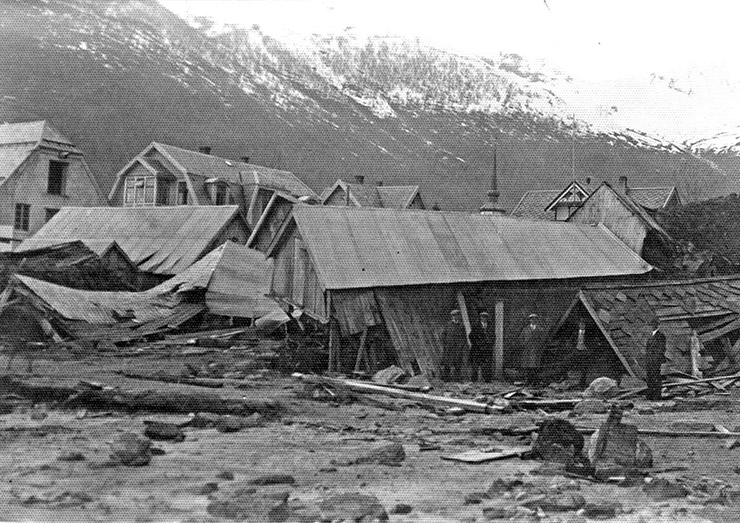
The impact was felt far and wide
While the main destruction and all the lives lost were in these three villages, the impact of the landslide and tsunami was felt much farther afield.
Water reached more than 200 metres inland in some places. Waves also made their way down the nearby Storfjord, causing some damage in Geiranger. Increased waves were noticed as far away as 1,000km.
Media interest
In the days before mass communication, media interest in places like Tafjord was minimal. However, the tsunami changed all that. Newspaper and radio coverage meant everyone in Norway soon became familiar with the tiny villages.
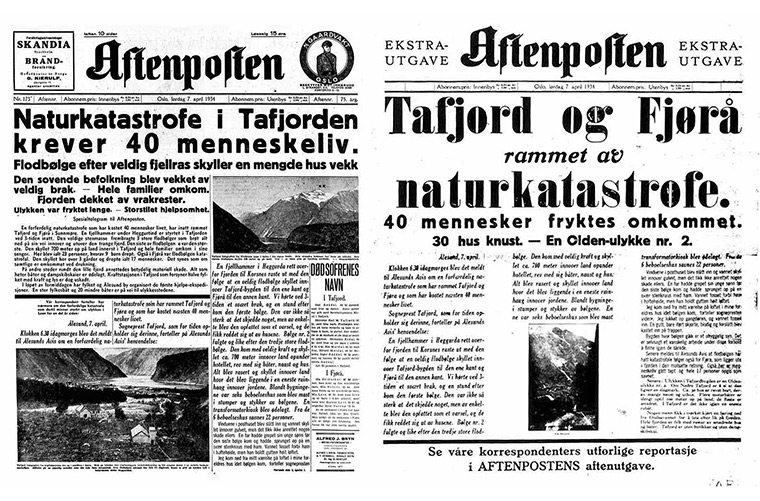
There was little need for emergency assistance as there was just one serious injury among the survivors. So it was journalists from the newspaper Aftenposten that were first to arrive at the scene by air and the newspaper quickly released a special edition.
Several European newspapers also covered the story, including the English Times.
The press, led by Aftenposten, took the fundraising initiative. Substantial onetary gifts were made from the King and the City of Council along with support from several other municipalities.


After reading this article, I was struck by the immensity of this tragedy. My true last name is Tafjord as my great grandfather, Lars Tafjord, survived this tsunami.
Its awful that many have never heard of this tragedy. Many lost their lives and my heart, even after all of these years later still goes out to them and their families.
According tot he memorial marker the event happened on April 7th, not February 7th as written in the text.
I’ve just watched the film called ‘The Wave’ and was interested in the history. Thank you for the article I have learnt something new today. I pray this doesn’t happen again.